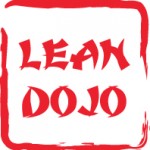Historically, the room of the dojo was the place of prayer, sacred place of the temple, which little by little, became the area where martial arts were taught.
Later, there is a very short distance between Excellence expected in the mastery of martial arts and Lean.
The lean Dojo is the power to apply « learning by doing » on the Gemba.
Making you an actor, in the frame of favorable conditions, dedicated 100% to Lean Manufacturing under the control of expert consultants.
You will immediately put into practice the Lean concepts, among which are the principal instruments of JIT and TPM.
The theory is directly followed by exercises on different machine-instruments and assembly lines.
A partner
Axium Performance is associated with INSA Rennes – Institut National des Sciences Appliquées.
Location: 20 Avenue des Buttes de Coesmes, 35708 Rennes

The training which will give you this opportunity
You will find in our catalogue the various training options which will open the doors of our dojo through the presence of this icon :

Find out about the contents of these sessions:
- TPM Basics
- The bases of "Just in Time"
- "Just in Time" in the Supply chain
Experimenting with the steps of transformation
The Lean University ® training modules are constructed on various configurations of the assembly area, therefore, making it possible for the trainees to visualize the next steps of the Lean transformation.
They can therefore progressively integrate the principles of operational efficiency through the experience of four configurations:
Disorganized drive flow each participant stocks up with parts based on their own needs, no specific limit of the product in earlier/later production of each workstation, no coordination of the production in function with a production order, provision breaks and wait times;
In-line drive flow no movements among the workstations, only a single part in production on a given workstation, materialized placement, intermediate stock is limited, mutualization of the delivery of the parts in function of the needs through a call of the logistics expert.
Forced balanced flow takt-time, lifting of the production, FIFO, forced flows, restock improvement, reduction of parts stock, polyvalent operators at every workstation.
Forced optimized flow : part after part flow, extension of the piloting through Takt-time earlier on the machines for production, reduction of the intermediate stock, improvement of the size of the batches, polyvalent operators between the assembly and the factory.
Methodology
Lean University® trainings can concern the following content:
- Hunt for the 7 MUDA : eliminate waste and difficulties;
- VSM / Mapping of the Flows of parts and information;
- Autonomous production team, progress team;
- Establish, maintain and verify the STANDARDs;
- VISUAL Management: panels, colors, indicators;
- "JIT Advanced", visual piloting, production lifting, forced flows;
- 5S Workshops;
- Information: earnings on administrative schedules;
- Equipment improvement: implementation and measurement;
- QUALITY Instruments (SAE, SPC, surveillance, stop at first defect);
- SMED/OTED: rapid instrument change;
- JIT Workshops Basics/WORKSTATIONS, continuous improvement, ergonomics;
- Factory piloting room, 10 minute meetings on the field, management standard, SIM/AIC;
- Lean foundations / Social dialogue mode which accompanies the improvement program;
- TPM Basics
Acquiring skills
Skills you will obtain:
- Diagnosing the performance of a delivery process of a product or service;
- Defining the axles of primary progress concurrent to the objectives of the Lean program;
- Proposing the most applicable improvement mechanisms or actions;
- Preparing the teams to the improvement methods and instruments of Lean;
- Piloting the improvement actions of the performance of the processes;
- Measuring the performance of the processes;
- Identifying and implementing the corrective actions;
- Standardizing good practices;
- Appreciating the results obtained and the actions implemented…

